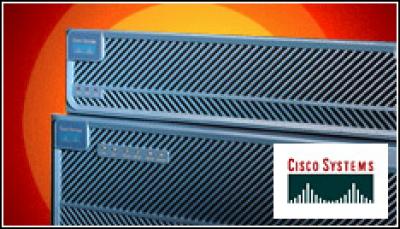Cisco’s Virtualisation Move Gets A Mixed Reaction

Analysts love Cisco’s move into the data centre, and the competition are picking holes in the strategy – while beta testers say it looks promising
Watch out for the competition
So what’s missing? Rival vendors lined up to tell us. As well as HP BLADE Network Technologies (see separate story) we spoke to Cisco’s big rivals in storage networking and data networks.
Brocade, the leader in storage networking was not impressed: “Cisco’s approach to ‘unified computing’ is not revolutionary,” Brocade spokesperson Elizabeth Walther told eWEEK: “Many companies with extensive experience, including Brocade, in solving complex data centre issues are already working on solutions.”
The challenge at hand, Walther said, is that the evolution of the data centre to a fully virtualised state is “extremely complex and should leverage open architectures and industry standards.”
“A dynamic and virtualised data centre holds the promise of many compelling benefits for end users, including increased server utilisation, decrease in power footprint and more efficient operations in general,” Walther said.
“However, achieving this goal is a complex challenge that can be best tackled by a broad ecosystem of industry partners and not based on a proprietary, singular architecture of one company.”
Meanwhile, a major data network competitor, Juniper told eWEEK that Cisco’s move missed the major requirements of the data centre. “Competition is always welcome, but Cisco’s new strategy does not seem to meet the market demand for choice and flexibility,” said Andy Ingram, Juniper Networks’ vice president of product marketing and business development, data centre business group.
“In terms of product choices, it’s the rack server form factor that currently dominates market volume, yet Cisco is only offering a blade chassis form factor. At the same time, this product is targeted at customers and applications that have been virtualised using hypervisors and virtual machines, which accounts for somewhere between 12 percent and 20 percent of the market. Cisco is entering a $50 billion server market with only a partial solution,” Ingram said.
Let’s hear from a beta tester…
Amidst the controversy, end users seem interested to give the system a try: “It’s time for the industry to see a different style of compute platform for the data centre, re-envisioned for virtualisation, which is a very healthy development,” chief technology officer Bryan Doerr of IT infrastructure-as-a-service provider Savvis told eWEEK.
Savvis provides managed hosting, co-location, and network connectivity, supported by the company’s global data centre and network infrastructure, and has been testing Cisco’s blade servers for s ahort while.
Savvis has been using UCS B-Series server and accompanying software platform for only about three weeks, said Doerr: “We’re running it though a series of basic-configuration tests and ‘getting-acquainted’ procedures. We’re undecided in terms of how we’ll use it in a platform, or an offering, or in what time frame,” Doerr said.
“What we haven’t done is run it through scale-level testing and QOS -level features, or the API we’d be integrating with. What we have seen so far is that it does function the way Cisco intended. They’ve accomplished a number of positive capabilities, and rendered them well and intuitively through the GUI, so I think at this stage, while it is early in the process, we’ve gotten good feelings from the platform,” Doerr said.
Nicholas Kolakowski and Chris Preimesberger contributed to this article